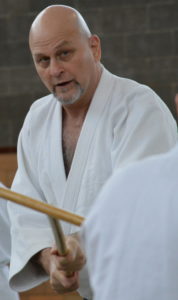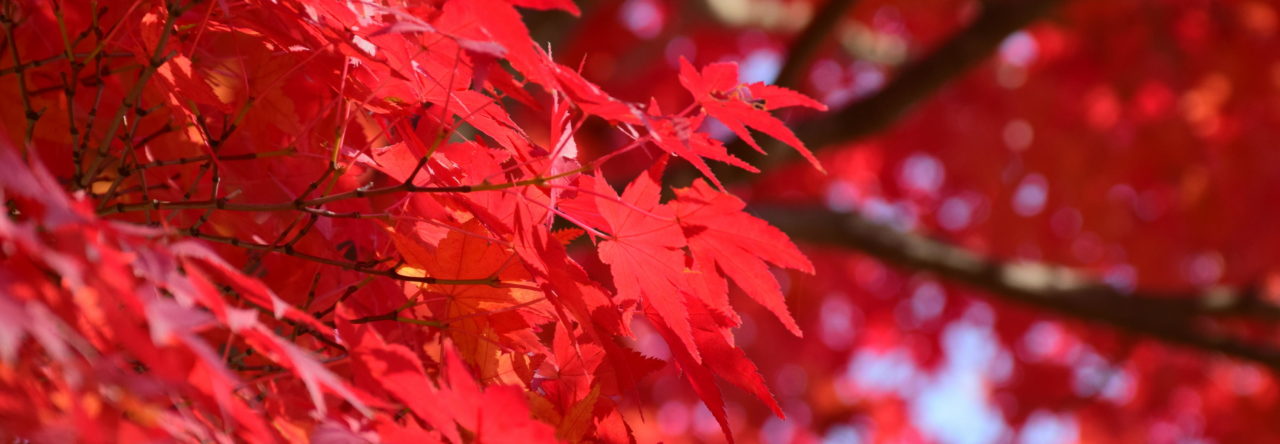 I have pursued the study of East Asian martial traditions since the late 1960s.
I have pursued the study of East Asian martial traditions since the late 1960s.
I have trained in a number of martial systems over the years. My primary area of study has been koryu (classical Japanese martial traditions), specifically the Araki-ryū torite-kogusoku and the Tenshin Bukō-ryū.
I trained in aikido with Terry Dobson, Yoshio Kuroiwa and Yasunori Kuwamori, and to this day, and in recent years, have collaborated with Bruce Bookman in the establishment of a set of jō and sword forms, equally applicable to aikidō and koryū practitioners. .
I also trained, for various periods of time, in: Judō at Tokai University’s Fifth Branch High School judō team; Muay Thai at Koei Gym in Tokyo; and Brazilian jiujitsu with a number of expert friends.
For many years, a primary focus of my training was internal Chinese martial arts, specifically: xingyiquan (studying varying lengths of time with Su Dong Chen, and Chris Bates) and tai chi ch’uan with with Madame Gao Fu and Qian Timing.
Aside from my ongoing koryu training, I have most recently been training in two new areas: the basics of Arrestling, under the instruction of its founder, Don Gulla and many other seniors in the system, and a focus on principle-based training regarding coordination of the body, often referred to as internal strength.
I have some established dojo in Europe in both Araki-ryu and Tenshin Buko-ryu. In the states, I have a small group of training associates in Taikyoku Araki-ryū.
A brief reflection on a demonstration of Araki-ryū and Tenshin Bukō-ryū at the NAMT 2013 Night of Budō by Mark Raugas
In these two enbu, Ellis Amdur (and his students) display very different expressions of martial arts. Bukō-ryū is elegant, powerful, and austere while Araki-ryū is ferocious to the point of being at times disturbing to watch. The closest thing I can relate is the image I have in my mind recently of a pedestrian being hit by a car. You cannot deny the power involved and you wish such a thing never happen upon anyone’s path.
Ellis has been studying diligently ideas from and elements of internal martial arts for some time: first with Su Dong Chen, and more recently through auditing what a number different teachers have to offer in that domain. Through this, I feel his work in koryū continues to turn sublime with time.
His Bukō-ryū demo is the best presentation of budō I have seen in a long time. I enjoyed it immensely. He expresses controlled, extreme, power and remains balanced and able to move and react. I really like the body mechanics he is bringing to his budō.
I liked the Araki-ryū video as well, even if it is unsettling. The first practice seems to be a drill to develop a kind of tensile strength as opposed to a kata; it was quite nice of him to share it with the audience. That kind of dynamic tension is very hard to maintain with weapons of that length and he is clearly using his center to do so, connecting to the ground and keeping his weight underneath. Regardless of the position of the opponent’s weapon, he brings force to it directly. I especially enjoyed how at 2:08 Ellis uproots his partner and causes him to pop back.
I found the moment in the clip at 5:08 to be very deep; Ellis is moving backwards and maintains sublime ma-ai, dodging, while letting the shidachi stay fully committed, yet unable to reach him. This type of controlled retreat is very hard to do while maintaining balance and posture; I have seen more than one senior martial artist falter under similar circumstances. At 5:40 the shidachi fouls up a bit and Ellis takes him down with instant alacrity. I liked the kata at 6:55 as well; Ellis drops shidachi without skipping a beat or losing balance. That is a very good application of explosive power, beyond what I can muster.
I think people will miss a lot of this in the energy of the kata and kiai. I like that he takes the kata to the edge, showing application amongst chaos. I think people who don’t get that idea will not know what they are looking at, because typical budō is so restrained and quiescent in comparison. I am sure I am just scratching the surface with these observations.
I think his demo proves something: budō isn’t about looking better than your opponent or enacting a Noh drama. It is about practicing on the edge, whether in fluidity (bagua), sensitivity (taiji), explosion (xingyi), or ferocity. I do think some practices, despite their technical acumen, lose that edge. It is too easy to become pre-occupied with hagiography, such as a preoccupation with a comparison of diverging interpretations of kata due to, for example, a split in the lineage five generations back, at the expense of enough hard training. That is one of the curses of contemporary budō and why Mixed Martial Arts (MMA) can be so refreshing (albeit brutally so) in comparison at times.
Ellis isn’t afraid to keep it real, and better yet, he is presenting high level skills hidden in plain sight, not just writing about the topic. I would not be surprised that the psychic energy and kiai he expresses will startle most people and they won’t even notice some of the skills he is able to pull off in the midst of the pressure of demonstrating with such intensity. In the clip, I could hear the audience get unsettled, expressing nervous laughter at times. I think they are missing something. I think Ellis took his student a bit over his edge, where the student’s kiai starts to break and get very high pitched instead of the shriek I hear from him. However, that might be the recording, since the student is mostly facing away from the camera.
It takes a lot of courage to keep presenting the very unique form of Araki-ryū Ellis practices with such a rough edge of combat to a wide audience, most of whom, even those who train, will just not get. It is a strong show of integrity in self-identity. To me, Ellis’ demos are like challenges meant to confront and inspire the audience, so that that others can answer by training harder than they currently do and hold themselves to a higher level of expectation.
I realize I might take some readers aback by being so taken by the direction he is expressing with his Araki-ryū. It is true that the art is probably not for most people. Additionally, some of its elements (the constant kiai, the furtive movements) are not compatible with many approaches to martial arts. However, go back and watch one of his Bukō-ryū demonstrations; I am not dwelling on it in this essay but it holds as much to explore. The same practitioner is eloquent in both expressions of budō. For this, Ellis deserves acknowledgement. I think the internal, for Ellis, has permeated both of the arts he has been entrusted with, in a way that is compatible with each art’s character and in a way that honors his teachers instead of departing from them.
